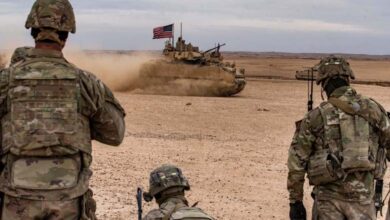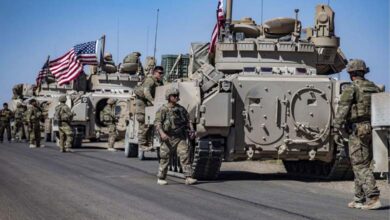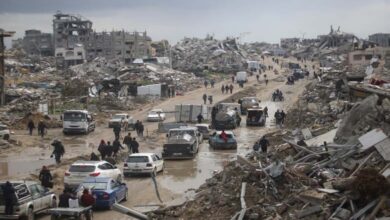From Simplicity to Smart Armor: The Top 10 Battle Tanks

Tanks continue to play a pivotal role in modern warfare, but the criteria for evaluating their “superiority” have undergone a fundamental shift in recent years.
According to a report by The National Interest, advanced technical specifications — such as powerful firepower or thick armor — are no longer the sole determining factors. On today’s battlefields, tanks face unprecedented threats from swarms of deadly drones, highly accurate guided munitions (like Javelin missiles), loitering munitions, and improvised explosive devices.
-
Drone Revolution: The Ukraine War Reshapes U.S. Military Priorities
-
First Tanks in the West Bank in Decades… Israel Evacuates 40,000 Palestinians ‘Without Return’
As a result, a tank’s survivability, field repairability, and ease of replacement have become more important than sheer technological advancement. What truly distinguishes tanks now is their ability to endure and remain operational in the face of these evolving threats, especially during prolonged wars of attrition.
This shift becomes evident when comparing battlefield realities to cutting-edge technology. Take Russia’s T-14 Armata, for example — one of the most advanced tank designs ever built and a source of concern for Western strategists — yet it is rarely seen on the front lines in Ukraine.
Why? Its extreme technical complexity and staggering cost make mass production and long-term deployment highly impractical.
-
Escalating tension between Iran and the Taliban… What is the truth behind Afghan tanks heading towards the border?
-
Robot Dogs and Legendary Aircraft: America Celebrates Its Army in Trump’s Style
Instead of relying on this technological marvel, Russia turns to upgraded versions of the old Soviet T-72 — a simple, durable, low-cost tank that is easy to produce and replace in large numbers.
This ability to mass-produce and compensate for losses clearly outweighs complexity under current combat conditions.
The same logic applies to modern Western tanks. Germany’s Leopard 2, the British Challenger 2/3, and the American M1 Abrams all offer high performance and decades-proven reliability. The Abrams in particular, though originating in the Cold War era, has undergone continuous upgrades with digital systems, active defense, and modular armor — making it one of the most dependable tanks in the world.
-
Modified M1 Abrams in Australia’s hands: Learn about the tank’s features
-
T-90M: Russia’s Steel Shield Dominates the Battlefield
However, their major obstacles lie in astronomical costs, excessive weight (hindering mobility in certain terrains, as seen with the Challenger 2 in Ukraine), and a limited ability to be produced quickly in large numbers.
These factors severely compromise their sustainability and their potential to make a decisive impact in long-term attritional warfare against opponents fielding simpler, more easily replaced tanks.
Given this new reality, tank evaluation is no longer based solely on paper specs. The real metrics now include the effectiveness of active protection systems, reactive armor, and crew protection design against modern threats.
The Russian army withdrew its T-72 tanks early from Ukraine’s front lines for fear of losing them, turning them into a “non-operational asset” in the current conflict—contrary to initial expectations.
-
China Changes the History of Warfare with a Non-Nuclear Warhead
-
From Beirut to Gaza… A New Mission for Israel’s 36th Division
6 – Type 99 (China)
A third-generation tank inspired by Russia’s T-90 and Western models, it features reactive armor and an active laser protection system.
Its main strength lies in China’s immense production capacity and relatively low cost. Although combat-tested only sparingly, its quantity and mass producibility grant it major strategic value.
5 – K2 Black Panther (South Korea)
Often dubbed the most technologically advanced tank, it includes a powerful engine, cutting-edge defense systems, and a high-speed 120 mm smoothbore gun.
-
Washington Approves $3 Billion Arms Deal for Israel
-
The Future of the British Army: Costly Modernization or Looming Threats?
Built to counter the North Korean threat, it outperforms any regional rival in tech terms. However, its high cost and difficult production and maintenance make it unreliable in long-term or large-scale wars.
4 – Leclerc XL (France)
France’s Leclerc XL is known for its high speed (up to 80 km/h), maneuverability, and relative lightness (especially compared to the Abrams), equipped with reactive armor.
However, its limited production (the main production line ended in 2008, and only 50 modernized units are being developed) restricts its impact in a large-scale war scenario.
-
The US and Afghanistan: A Prisoner Exchange after “Prolonged Negotiations”
-
Washington Denies Establishing a Military Base in Kobani
3 – Merkava 5 (Israel)
One of the most technologically advanced tanks in service, it features advanced sensors, electronic warfare systems, AI, and a powerful 120 mm cannon firing guided shells.
Its design prioritizes crew survivability. Given Israel’s modest army and lack of large-scale ground warfare expectations, it maintains reasonable quantities in its regional context—despite high production costs.
2 – M1 Abrams (USA)
A legendary tank with a solid combat record and high reliability, the Abrams has undergone continuous upgrades (digitization, active defense). But it is showing signs of age against modern threats.
-
Discover the 10 Most Powerful Armies in Europe: The United Kingdom in First Place
-
Ukraine’s Bell Rings across Europe: Cooperation to Build a Defense Industrial Base
Its high cost of production and maintenance, coupled with the decline of the U.S. industrial base, make sustainability challenging. In Ukraine, its limited deployment had little decisive impact and highlighted the challenge posed by drones to heavy armor.
1 – T-72 (Russia)
It may seem surprising, but the T-72 tops this list for one critical reason: real-world effectiveness in modern warfare.
Though based on an older design, the T-72 is simple, durable, inexpensive, and mass-producible—making it the backbone of Russian forces in Ukraine.
-
Permanent Occupation of the Sector, Alteration of Its Map, and Construction of Military Bases: Israel’s Secret Plans for Gaza
-
Missile Defense: Iran or Russia? Ukraine Angered by Israel’s “Special Treatment”
While more advanced tanks like the T-90M and T-14 struggle with battlefield adaptation or availability, the T-72 keeps doing the job.
It doesn’t win with technology, but with endurance, survivability, and rapid replacement—qualities that, in 2025, make it the best-performing tank in combat.
Its global presence and extensive battlefield record reinforce this assessment.












